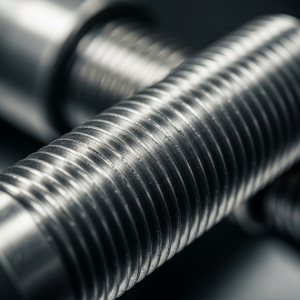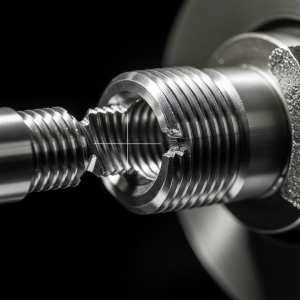What Is Threading in a Lathe Machine? A Beginner’s Guide
What is threading in a lathe machine? Simply put, it’s the process of cutting helical grooves, or threads, on the external or internal surface of a cylindrical workpiece using a lathe. This technique is essential in manufacturing components such as bolts, screws, nuts, and pipe fittings, where precision and secure fastening are crucial. If you’re new to machining, understanding threading operations on a lathe is a foundational skill you’ll want to master. This guide will break down the basics of threading in a lathe machine, how the process works, the types of threads you can cut, and some essential safety tips.
What Is Threading?
Threading is the method used to create a continuous spiral ridge on the surface of a part, which allows two components to screw together. These threads can be either:
- External threads: Found on bolts or shafts.

- Internal threads: Found inside nuts, holes, or fittings.

Threading is achieved using a single-point cutting tool that moves in synchronization with the rotating workpiece. The cutting tool gradually removes material along a helical path to form the desired thread shape and depth. The accuracy of the thread depends on the proper setup of the lathe and tool alignment.
How Threading Works on a Lathe Machine
In a lathe machine, threading is performed by coordinating the longitudinal feed of the cutting tool with the rotation of the workpiece. This synchronization is crucial to ensure that the thread pitch the distance between two corresponding points on adjacent thread crests is accurate and consistent.
Here’s a general step-by-step overview:
- Select the Workpiece and Tool: Secure the workpiece in the chuck or between centers. Choose the appropriate threading tool based on the thread form (e.g., 60° for metric or unified threads).
- Set the Gearbox or Change Gears: Adjust the machine’s gearbox or change gears to match the desired thread pitch. The lathe’s lead screw drives the carriage and synchronizes the tool movement with the rotation.
- Position the Tool Correctly: Ensure the threading tool is aligned perpendicular (90°) to the axis of the workpiece for an accurate thread profile.
- Engage the Thread Dial Indicator: Use the thread dial to engage the half-nut lever at the correct point, ensuring consistent thread spacing.
- Make Multiple Passes: Begin with a light cut and increase the depth slightly on each subsequent pass until the full thread depth is reached.
- Inspect the Thread: Use a pitch gauge or mating part to ensure accuracy and proper fit.
Types of Threads You Can Cut
Depending on the application, different thread forms can be created using a lathe:
- Unified National Thread (UNC/UNF): Common in North America.
- Metric Thread: Standardized internationally by ISO.
- Acme Thread: Features a trapezoidal shape, ideal for lead screws and high-load applications.
- National Pipe Thread (NPT): Tapered thread used in fluid and gas piping systems.
- Square Thread: Strong and efficient for power transmission, though harder to machine.
Each type has specific applications and standards that machinists must follow for proper fit and function.
Safety Tips for Threading
Threading can be dangerous if safety precautions are overlooked. Always follow these best practices:
- Wear PPE like safety goggles, gloves, and proper clothing.
- Keep hands and tools clear of rotating parts.
- Secure loose clothing and long hair.
- Double-check alignment and tool positioning before starting.
- Never leave the machine unattended while in operation.
So, what is threading in a lathe machine? It’s a precise, essential machining process used to create threads that allow mechanical parts to fasten securely. Whether you’re a hobbyist or a beginner in the metalworking industry, learning how to cut threads on a lathe will open the door to countless practical applications in manufacturing, automotive, construction, and engineering.
If you’re looking for high-quality lathe machines, threading tools, and expert guidance, Can Star Industrial is here to help. We provide dependable, industry-grade equipment and support to ensure your projects are built with accuracy and excellence.
